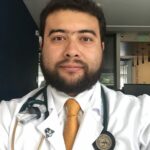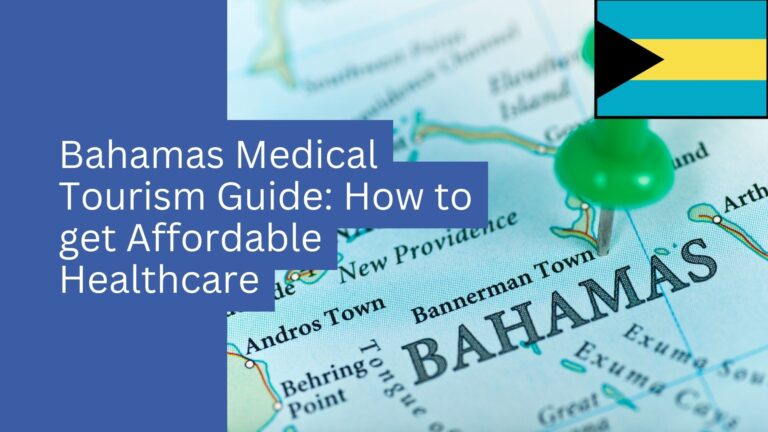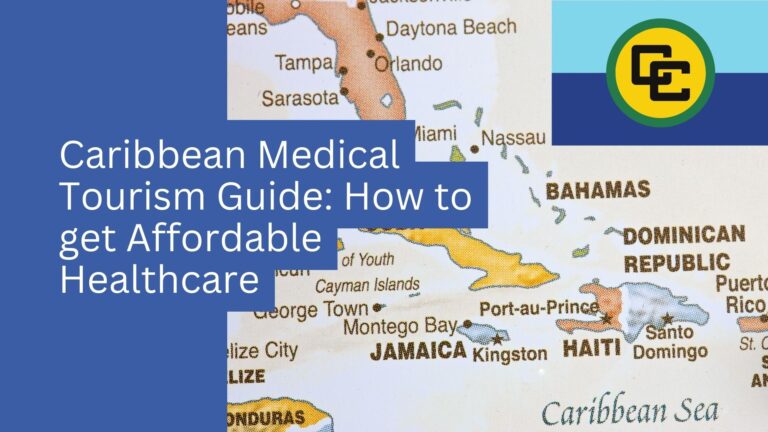Book Appointment Now
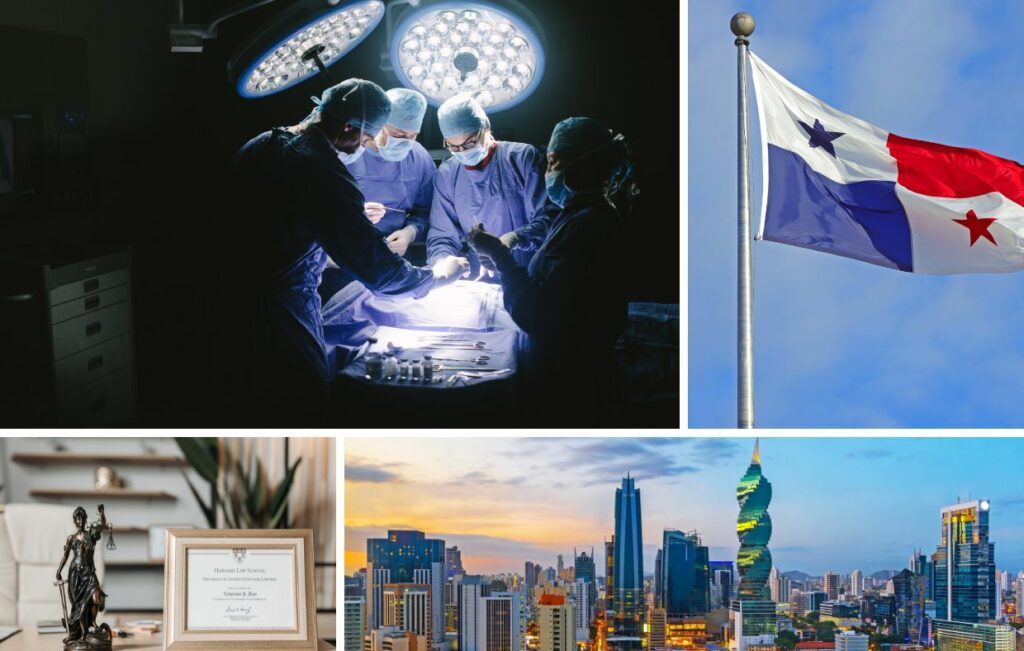
How to Find the Best Plastic Surgeons in Panama: Top Doctors & Premium Care
Over 50,000 international patients travel to Panama annually for medical procedures, with approximately 40% seeking plastic surgery. I’m Dr. Jorge Cardenas, Head of Medical Tourism at Medical Tourism Packages. Having coordinated over 500 procedures during my eight years in this field, I can tell you this: while you can save 50-70% compared to U.S. prices, only two hospitals in Panama hold Joint Commission International (JCI) accreditation. This distinction matters more than any marketing claim.
Why Panama Outperforms Costa Rica and Colombia for Medical Tourism
The Dollar Advantage (And Why It Makes a Difference)
Let’s address the financial aspect first, since cost savings likely brought you here. Panama uses the U.S. dollar as its official currency. This means no exchange rate fluctuations, no currency risk, and no unexpected charges on your credit card statement. Compare this to Colombia’s peso, which can swing 15-20% in a volatile month, or Mexico’s peso, which dropped 30% against the dollar in 2020. Your $5,000 surgery quote in Panama remains $5,000.
Here’s what procedures actually cost at accredited facilities:
- Facelift in Miami: $15,000-20,000
- Same procedure at Hospital Punta Pacifica: $4,500-6,000
- Breast augmentation in Los Angeles: $10,000-12,000
- In Panama City with Motiva implants: $4,000-5,000
These prices apply specifically to board-certified surgeons operating in accredited hospitals. Yes, you’ll find clinics advertising a Brazilian Butt Lift for $2,000, but there’s a reason those prices seem too good to be true.
Travel logistics offer another significant advantage. Copa Airlines provides direct flights from major North American cities:
- Miami: 3 hours
- Houston: 4.5 hours
- New York: 5 hours
- Los Angeles: 6.5 hours
This accessibility contrasts sharply with medical tourism destinations like Istanbul (12+ hours) or Bangkok (20+ hours). You arrive rested and ready for consultation rather than battling jet lag. Americans and Canadians receive 180-day visa-free entry—simply arrive with your passport and proof of return travel.
Panama’s Medical Infrastructure: Johns Hopkins Standards in Central America
Since 2010, private investors have channeled $1.5 billion into Panama’s healthcare infrastructure. The majority of this investment concentrated on two facilities: Hospital Punta Pacifica and Clínica Hospital San Fernando.
Hospital Punta Pacifica operates under direct management by Johns Hopkins Medicine International—not merely an affiliation, but actual operational oversight. Johns Hopkins physicians regularly rotate through the facility, implementing identical surgical safety checklists and infection control protocols. Their surgical site infection rate stands at 0.5%, compared to the U.S. national average of 2-3%.
The technological capabilities at these facilities include:
- Vectra 3D imaging systems for surgical planning and outcome visualization
- VASER liposuction technology for reduced trauma and faster recovery
- BodyTite radiofrequency-assisted liposuction for simultaneous skin tightening
- Renuvion J-Plasma technology for minimally invasive skin tightening
However, this advanced equipment exists exclusively at JCI-accredited hospitals. Facilities like Hospital Nacional and Hospital Paitilla, while respectable for local care, lack the international accreditation that ensures these standards.
Identifying Qualified Plastic Surgeons: Credentials That Matter
Understanding Certification Standards
In the United States, becoming a plastic surgeon requires completing a 6-year residency program followed by rigorous board examinations. Panama’s regulations are less stringent—technically, any licensed physician can perform cosmetic procedures. This regulatory gap makes your due diligence essential.
Your verification checklist should include:
- APCPER Membership: The Asociación Panameña de Cirugía Plástica Estética y Reconstructiva maintains Panama’s official plastic surgery registry. Verify membership at asociacionpanamenadecirugiaplastica.com before proceeding.
- International Board Certification: Only 12 surgeons in Panama hold American Board of Plastic Surgery certification. Surgeons like Dr. Luis Picard-Ami carry the FACS designation (Fellow of the American College of Surgeons), while Dr. Jacqueline Richa remains the only Panamanian plastic surgeon trained at Mayo Clinic.
- Hospital Operating Privileges: Legitimate plastic surgeons maintain privileges at major hospitals. If a surgeon operates exclusively in their private clinic, consider this a significant warning sign.
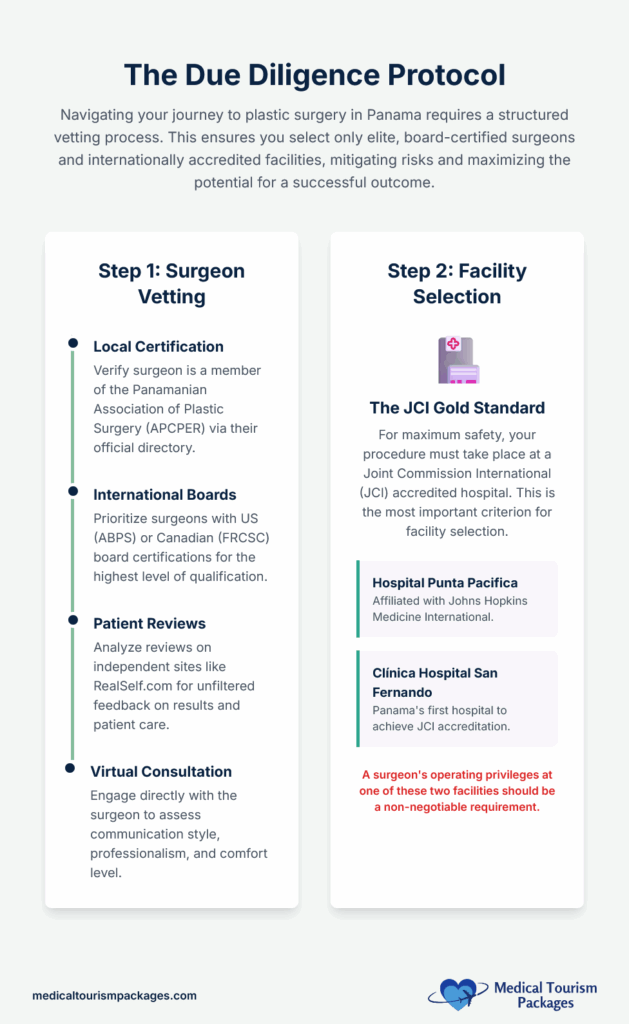
I’ve personally contacted APCPER (contacto.apcper@gmail.com) to verify surgeon credentials. They typically respond within 24-48 hours. This simple step provides invaluable protection.
Red flags that should prompt immediate reconsideration:
- Use of “cosmetic surgeon” rather than “plastic surgeon” (these are distinctly different qualifications)
- Promises of same-day surgery
- Prices significantly below market rates
- Absence of comprehensive before/after portfolios
- Defensive responses to credential questions
Experience Metrics: Volume Matters More Than Years
Dr. Roberto Tribaldos performs over 500 procedures annually—essentially two surgeries per working day. Compare this to lower-volume practitioners who might complete 50 procedures yearly. For complex procedures like Brazilian Butt Lifts, which carry inherent risks even with excellent surgeons, you want someone performing multiple procedures weekly, not monthly.
Essential questions for your consultation:
- “How many of this specific procedure did you perform last year?” (Look for 50+ for common procedures)
- “What percentage of your practice involves international patients?” (Should exceed 30%)
- “Can you connect me with recent patients from my country?” (They should readily provide references)
Academic involvement provides another quality indicator. Surgeons like Dr. Luis Crespo, who serves as Associate Professor at Universidad de Panama, demonstrate peer recognition through teaching positions and published research. This academic engagement suggests expertise acknowledged by the broader medical community.
JCI Accreditation: Understanding the Gold Standard
Joint Commission International accreditation requires hospitals to meet over 1,200 measurable standards. The process typically takes 18-24 months of preparation, with many facilities failing initial evaluations.
In Panama, only Hospital Punta Pacifica and Clínica Hospital San Fernando have achieved this distinction. This limitation actually simplifies your decision-making process.
JCI standards encompass:
- Infection rates maintained below 1%
- Mandatory surgical timeouts for patient and procedure verification
- Barcoded medication administration systems
- Comprehensive emergency response protocols
- Verified staff credentialing
While Hospital Paitilla promotes its Cleveland Clinic partnership, it lacks JCI accreditation. Such partnerships, while suggesting quality, don’t guarantee the systematic safety protocols that accreditation ensures.
Analyzing Patient Reviews and Digital Presence
RealSelf.com has transformed plastic surgery transparency. The platform requires patient verification and prevents deletion of negative reviews. Dr. Picard-Ami’s sustained 5-star rating across 25+ reviews over seven years demonstrates remarkable consistency.
Sophisticated review analysis should examine:
- Surgeon responses to negative feedback (indicating accountability)
- Frank discussion of minor complications (every surgeon experiences them)
- Specific mentions of staff members and recovery details
- Timeline consistency across multiple years
- Verified before/after photos with realistic results
Social media presence provides additional insights. Professional surgeons display:
- Actual surgical markings and planning
- Operating room documentation
- Progressive healing photos over months
- Some imperfect results (reflecting reality)
Be wary of feeds showing only dramatic transformations with perfect lighting—this suggests marketing over medicine.
Procedure Analysis: Outcomes, Risks, and Realistic Expectations
Facial Surgery: Expertise in Diverse Anatomies
Panama’s ethnic diversity creates surgeons experienced with varied facial structures. Dr. Raul de León, who completed fellowship training in Miami, specializes in Hispanic rhinoplasty techniques. This matters—nasal anatomy varies significantly among ethnicities, and surgeons must adapt their approach accordingly.
Current pricing for facial procedures:
- Rhinoplasty: $2,500-4,500 (versus $8,000-15,000 in the U.S.)
- Deep plane facelift: $6,000-8,000 (versus $20,000-30,000)
- Blepharoplasty (eyelid surgery): $2,000-3,500 (versus $5,000-8,000)
Panama’s climate presents unique considerations. With 80% humidity year-round, incisions require different management protocols. Experienced surgeons adjust their techniques—using specific suture materials, implementing more frequent dressing changes, and beginning aggressive scar treatment by week two.
Body Contouring: Safety Protocols and Realistic Outcomes
The Brazilian Butt Lift deserves special attention due to its risk profile. Even excellent surgeons face a 1:3,000 mortality rate with this procedure. In 2018, Panama’s leading surgeons implemented enhanced safety protocols:
- Fat transfer limited to 1,000cc per side
- Ultrasound-guided injection to avoid vascular injury
- BMI restrictions under 35
These protocols have eliminated BBL-related deaths at JCI hospitals since implementation, though outcomes at non-accredited facilities remain concerning.
Safer body contouring options include:
- VASER liposuction: $3,000-5,000 for multiple areas
- Abdominoplasty (tummy tuck): $4,500-6,500
- Mommy makeover combination: $10,000-12,000
Recovery facilities near major hospitals offer comprehensive packages including:
- 24/7 licensed nursing care
- Lymphatic drainage massage (typically $100 per session if arranged independently)
- Hyperbaric oxygen therapy for accelerated healing
- Properly fitted compression garments
Breast Surgery: Premium Implants at Accessible Prices
Panama stocks all major implant brands: Mentor, Allergan, Motiva, and Eurosilicone. The same Motiva implants that cost $2,000 (implants alone) in the United States are included in total surgical packages of $4,000-5,000 in Panama.
Warranty coverage transfers internationally—I’ve verified this directly with manufacturers. If you experience complications years later in your home country, warranty protections remain valid.
Dr. Joseph Setton specializes in revision procedures, correcting complications from previous surgeries. These complex cases require exceptional skill and typically cost $6,000-8,000 in Panama versus $20,000+ in the United States.
Cultural awareness matters in aesthetic planning. Latin American preferences often favor fuller, more projected results. Clear communication using 3D imaging helps ensure your aesthetic goals align with your surgeon’s understanding.
Non-Surgical Alternatives: Professional Protocols
Panama’s adoption of combination treatments provides effective non-surgical options:
- Liquid facelift (Botox + fillers + Ultherapy): $2,000-3,000
- Non-surgical body contouring (CoolSculpting + Morpheus8): $3,000-4,000
- Facial rejuvenation (PRP + microneedling + laser): $1,500-2,000
These procedures should be performed under plastic surgeon supervision, not by standalone aesthetic practitioners. The medical expertise ensures appropriate patient selection and realistic expectations.
A note on thread lifts: While popular, these provide temporary results (12-18 months) and can complicate future surgical facelifts. Ethical surgeons will explain these limitations honestly.
Your Complete Surgery Timeline: 14 Days in Panama
Pre-Arrival Phase (90-30 Days Before Travel)
Begin virtual consultations three months before your intended travel date. Quality surgeons maintain busy schedules and require advance booking.
Virtual consultation requirements:
- Complete medical history disclosure
- Current medication list (including supplements affecting bleeding)
- Previous surgical history
- High-quality photos from specified angles
- Realistic goal images for reference
Laboratory requirements include:
- Complete blood count
- Comprehensive metabolic panel
- Coagulation studies (for body contouring procedures)
- Pregnancy testing when applicable
- HIV/Hepatitis screening
- Mammography (breast surgery patients over 40)
Financial planning considerations:
- Consultation fees: $100-150 (typically credited toward surgery)
- Surgical deposits: 30-50% via wire transfer
- International wire fees: 3-5% (factor into budget)
- Credit card acceptance varies by provider
Arrival and Surgery (Days 1-3)
Schedule arrival for Tuesday with Thursday surgery. This provides Wednesday for final consultations while ensuring your surgeon has full-week availability.
Premium practices include comprehensive arrival services. Dr. Picard-Ami’s team provides gate meet-and-greet, immigration assistance, and private transportation. After international travel, these services prove invaluable.
Pre-operative day includes:
- Detailed physical examination
- Precise surgical markings (30-45 minute process)
- Anesthesiologist consultation
- Final photography
- Consent documentation in English and Spanish
Surgery day begins with NPO (nothing by mouth) from midnight. Expect 6 AM arrival for preparation. Procedures typically last 2-4 hours, with initial recovery being understandably challenging.
Recovery Phase (Days 4-10)
Recovery accommodation options:
Specialized Recovery Houses ($150-250/night):
- Licensed nursing staff 24/7
- Professional drain management
- Medication administration
- Included lymphatic massage
- Peer support environment
- Transportation to appointments
Hotel Recovery ($100-200/night):
- Greater privacy
- Self-directed care
- Visiting nurse services
- Separate massage arrangements
- Suitable for minor procedures
- Independent transportation needed
Panama’s humidity requires specific garment management protocols. Quality recovery houses implement systematic approaches: regular garment changes, antifungal preventive measures, and proper hygiene maintenance.
Departure Preparation (Days 11-14)
Your final surgical evaluation determines flight clearance. Surgeons verify:
- Proper incision healing
- Drain removal completion
- Absence of infection signs
- Cabin pressure tolerance
Essential documentation includes:
- English operative report
- Detailed surgical technique description
- Implant identification (if applicable)
- Follow-up instructions
- Emergency contact information
Avoid premature departure. Patients attempting day 7 flights risk complications like seroma development during air travel, potentially requiring emergency intervention upon arrival home.
Financial Planning: Complete Cost Analysis
Comprehensive Budget Example (Tummy Tuck)
Medical Expenses:
- Surgeon’s fee: $3,500
- Hospital and operating room: $1,500
- Anesthesiologist: $800
- Pre-operative laboratories: $200
- Medications: $150
- Compression garments: $200
- Lymphatic massage (10 sessions): $600 Medical subtotal: $6,950
Travel and Accommodation:
- Round-trip airfare: $400-800
- Recovery accommodation (12 nights): $1,800-3,000
- Meals and transportation: $500 Travel subtotal: $2,700-4,300
Total investment: $9,650-11,250 (Compared to $15,000-20,000 for surgery alone in the United States)
Always maintain a 15% contingency reserve for unexpected expenses or extended recovery needs.
Insurance Considerations
Standard health insurance excludes elective international surgery. However, specialized medical complication insurance is available and strongly recommended.
Coverage typically includes:
- Complication treatment in Panama
- Emergency surgical intervention
- Medical evacuation (potentially $50,000+)
- Continued treatment upon return
- Extended accommodation if required
Premiums range from $500-1,500 depending on procedure complexity. One patient who declined coverage spent $30,000 treating a post-operative infection in Miami—the insurance would have cost $800.
Secure Payment Methods
Wire transfers remain standard for large amounts. Safety protocols include:
- Transfer only to verified hospital accounts
- Obtain written confirmation
- Utilize bank fraud protection
- Never pay 100% in advance
Major hospitals accept credit cards for facility fees. Some surgeons accept PayPal for deposits. Avoid Western Union or cryptocurrency payments—these are common fraud vehicles.
Frequently Asked Quesitons
How do I verify if a plastic surgeon in Panama is properly certified?
Start by checking the APCPER (Asociación Panameña de Cirugía Plástica Estética y Reconstructiva) directory at asociacionpanamenadecirugiaplastica.com. For the highest credentials, look for surgeons with U.S. board certification (FACS) or Canadian certification (FRCSC)—only 12 surgeons in Panama hold American board certification. You can also email APCPER at contacto.apcper@gmail.com for verification, and they typically reply within 24–48 hours.
What does plastic surgery actually cost in Panama compared to the United States?
At JCI-accredited hospitals with board-certified surgeons, prices average: rhinoplasty $2,500–4,500, facelift $4,500–6,000, breast augmentation $4,000–5,000, tummy tuck $4,500–6,500—roughly 50–70 % less than U.S. rates. Add airfare, 12–14 days’ lodging, lymphatic massages, medications, and a 15 % contingency fund; a tummy tuck’s real total runs ≈ $9,650–11,250.
Which hospitals in Panama are safe for plastic surgery?
Only two facilities carry Joint Commission International (JCI) accreditation: Hospital Punta Pacifica (managed by Johns Hopkins Medicine International) and Clínica Hospital San Fernando. Their standardized protocols keep surgical site infection rates as low as 0.5 %. Other clinics may have U.S. partnerships, but without JCI oversight they lack the same safety guarantees—stick to these two hospitals.
What questions should I ask during my consultation with a Panama plastic surgeon?
Ask: “Are you an APCPER member?” “Do you hold U.S. (FACS) or Canadian (FRCSC) board certification?” “How many of this procedure did you perform last year?” (look for 50 +). “What percentage of your patients are international?” (ideally > 30 %). “Which JCI-accredited hospital will you use?” “What is your complication-management protocol?” and “Can you connect me with recent patients from my country?”
Does insurance cover plastic surgery in Panama?
Standard U.S. health plans will not pay for elective surgery abroad. Purchase specialized medical-complication insurance ($500–1,500) to cover in-country treatment, emergency surgery, medical evacuation (often $50,000 +), and follow-up care at home. One uninsured patient paid $30,000 for a Miami infection—coverage would have cost $800.
How do Panama plastic surgeons accommodate international patients?
Top practices provide virtual consultations ($100–150, credited to surgery), English-speaking coordinators, airport pickup, recovery-house partnerships with 24 / 7 nursing, and video follow-ups once you return home. U.S. lab results from the previous 30 days are accepted for pre-op clearance.
What are the main risks of plastic surgery in Panama and how can I minimize them?
The key risk is limited legal recourse if malpractice occurs. Reduce danger by choosing only APCPER-verified surgeons operating in JCI-accredited hospitals, buying complication insurance, selecting surgeons who perform your procedure weekly, and staying 12–14 days for recovery. For Brazilian Butt Lifts, confirm adherence to 2018 safety limits (≤ 1,000 cc per side).
How long should I plan to stay in Panama for plastic surgery?
Schedule 12–14 days. Arrive Tuesday, operate Thursday, spend 24–48 hours in hospital, then 7–10 days in a recovery house or hotel with daily nursing. Your surgeon will clear you to fly on days 11–13. Leaving earlier (e.g., day 7) heightens risks such as seromas; body-contouring cases almost always require the full two weeks.
Making Your Decision: Final Action Steps
Transform research into action with systematic verification:
Surgeon Validation:
- Confirm APCPER membership
- Verify international board certifications
- Document hospital privileges
- Complete video consultation
- Contact 3-5 patient references
- Review 50+ before/after images
Facility Verification:
- Confirm Punta Pacifica or San Fernando only
- Verify current JCI accreditation
- Understand emergency protocols
- Request virtual facility tour
Financial Preparation:
- Obtain written itemized quotes
- Calculate comprehensive budget
- Secure complication insurance
- Establish 15% contingency fund
- Confirm payment timeline
Logistical Planning:
- Book 2-3 months in advance
- Reserve 12-14 days in Panama
- Select recovery accommodation
- Arrange home follow-up care
The math is straightforward: save $10,000-30,000 while receiving equivalent quality care—but only by selecting verified surgeons at JCI-accredited facilities. Compromise on these standards, and you risk becoming a cautionary tale rather than a success story.
Ready to proceed? Contact our experienced patient coordinators at Medical Tourism Packages. We’ve distinguished between surgeons who deliver results and those who merely market well. More importantly, we understand that in medical tourism, this distinction can define your entire experience.
